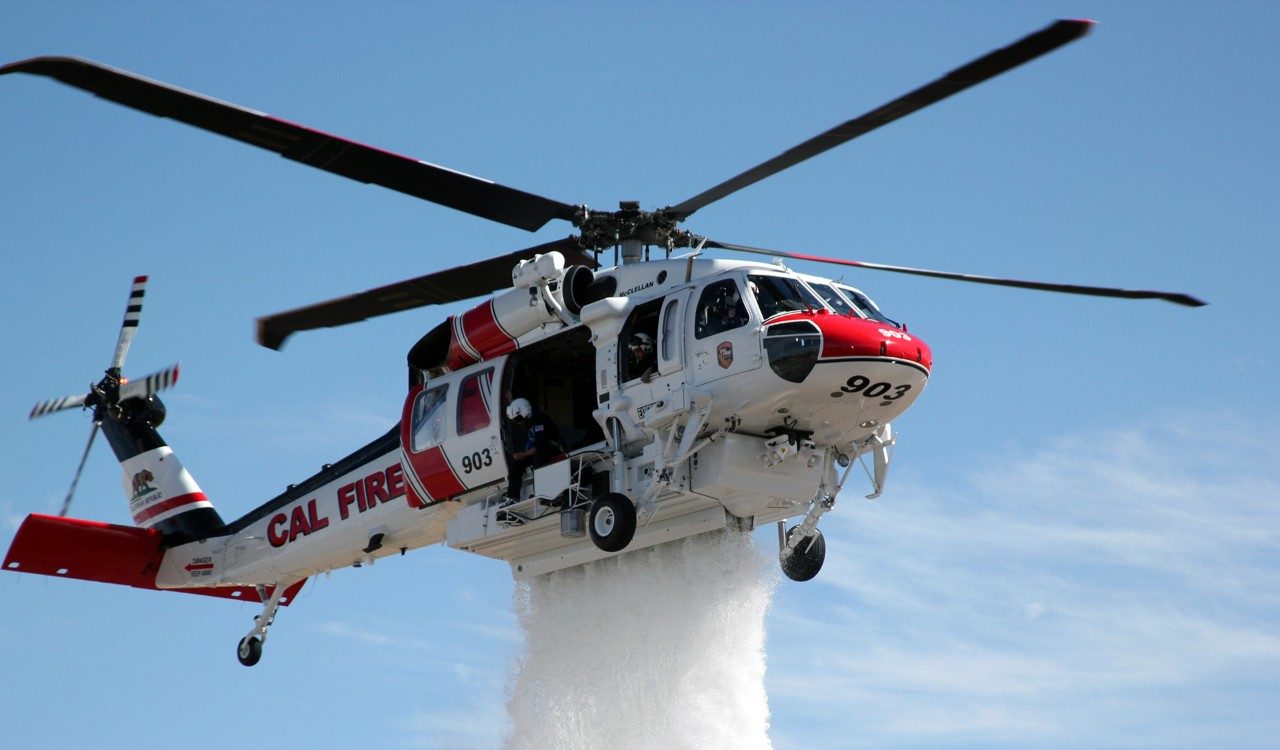Before dawn on Oct. 30, 2019, residents of Southern California’s Simi Valley were awakened by the news that their community was in the path of a devastating wildfire fueled by hurricane-force winds, and they needed to evacuate. Several other fires were already blazing across the state; now, one was bearing down on their homes – and the nearby Ronald Reagan Presidential Library.
Justin Barshaw was home with his four sleeping children, ages 2 to 10. The orange glow and smoke looked like a scene from Armageddon outside as he hustled the children to the car shortly after 6 a.m. There wasn’t even time to put shoes on the kids. “You had to grab whatever you could and get out,” he reported.
Meanwhile, flames were approaching the Reagan Library and the gravesite of the 40th president and first lady. A handful of staffers remained on site, trying to protect historical records and artifacts as the fire reached the gates. John Heubusch, executive director of the Reagan Presidential Foundation, called it a tough situation. “It’s a place of national treasure, and the flames are licking right up against it,” he told a reporter by phone.
It was a harrowing few days as more than 1,800 acres burned in what became known as the Easy fire, named for the street where a spark from a utility line ignited the blaze.
In the end, all 30,000 residents evacuated were safe, and the library remained untouched by fire, thanks to the unrelenting efforts of 1,000 firefighters. Those firefighters were supported by the speed and versatility of the Los Angeles County Fire Department’s (LACoFD) fleet of firefighting aircraft, including Sikorsky S-70A FIREHAWK helicopters and their 1,000-gallon water tanks.
Heubusch recalls sheltering in place and hearing the constant aerial firefighting, as load after load of water was dropped by the helicopters navigating in 60 mph winds. “There’s no doubt in my mind those helicopters saved the Reagan Library,” he said.
The FIREHAWK is significantly faster than other aerial tankers (140 mph compared to roughly 100 mph), meaning more water drops in less time. “In the time it’d take [another aircraft] to go and get water, we could do probably four for five turns with the FIREHAWK,” Patrick Sprengle, battalion chief of Air Operations for LACoFD, told a reporter.
Born a BLACK HAWK military helicopter, Sikorsky adapted the multi-mission FIREHAWK for fire and rescue. In addition to its speed, the FIREHAWK can fly in high winds, high elevation, and at night.
“At hundreds of brush fires and medical rescues, the Sikorsky FIREHAWK helicopter has proven to simply be the best all-in-one aerial firefighting weapon,” said LACoFD Fire Chief Daryl L. Osby.
And now, the S-70i FIREHAWK by Sikorsky, a Lockheed Martin company, is poised to take the mission advantage even further. Incorporating feedback from LACoFD – which has pioneered firefighting tactics using the S-70A FIREHAWK for nearly two decades – the next-generation model S-70i has more engine power and increased maneuverability. It is safer to operate at altitudes up to 10,000 feet while carrying up to 14 firefighters or 1,000 gallons of water.
The addition of a retractable snorkel allows the pilot to insert firefighters at the fire line, then quickly fly to a local water source. In 45 seconds, it can pump 1,000 gallons of water into the external belly tank and return to make the water drop with force and precision.
Responders can use a new external hoist above the cabin door to rescue an injured firefighter or civilian. A cargo hook rated for 9,000 lb allows external cargo transport. And Departments can reconfigure the aircraft, shifting from firefighting to medical transport or rescue in a matter of minutes – while in flight.

Fire departments rely on their helicopters for a variety of missions, and the S-70i FIREHAWK excels in all. “They’re just a bigger, better platform to work on [that] allow us to get out there quicker, allow us to go longer on that fuel load, allow us to carry more patients,” Sprengel has said.
Several departments in wildfire-prone California believe the S-70i FIREHAWK helicopter is the future of aerial firefighting. The state Department of Forestry and Fire Protection (CAL FIRE), the City of San Diego Fire-Rescue Department, and LACoFD have all taken delivery of their first S-70i FIREHAWK aircraft to elevate their fire and rescue capabilities – and there’s more on the way. LACoFD has acquired two new-model FIREHAWK aircraft to join its three older models, while CAL FIRE plans to add 12 to its fleet over the next five years.
On May 13, 2020, California Governor Gavin Newsom announced new firefighting assets for CALFIRE. “You may recall we promoted the procurement of 12 Black Hawk helicopters. We’re not going to walk that back, it’s just too important in terms of our mutual aid and public safety in the State of California. I want folks to know those helicopters are now arriving. These Black Hawks are extraordinary. They provide faster suppression capacity and more robust capability in terms of number of gallons of water that they are able to disperse. They are safer for our personnel in terms of redundancy… [with] twin turbine engines. We’ll start to see these Black Hawks in our fleet and I just think that’s foundational and fundamental to our suppression efforts and our ability to meet the public safety needs in this state.”




